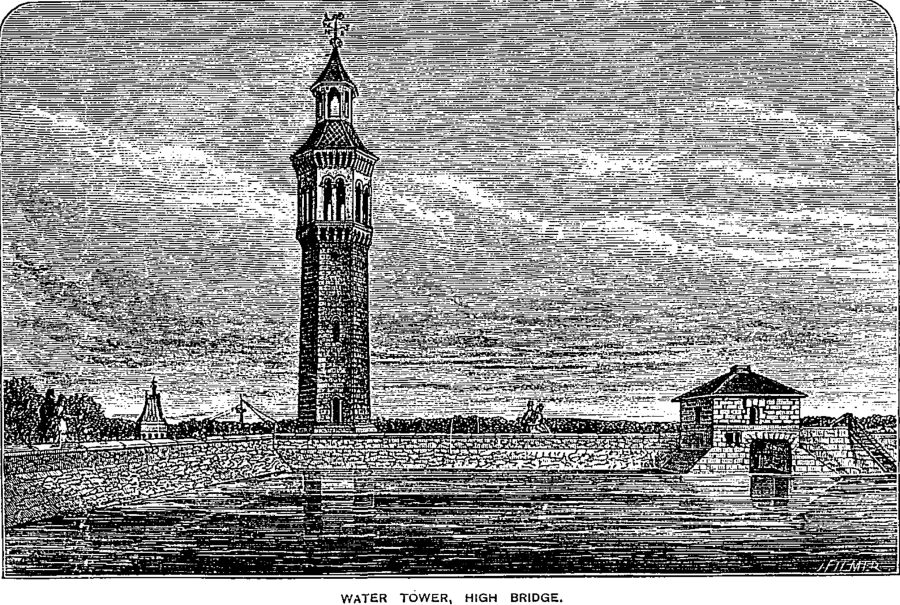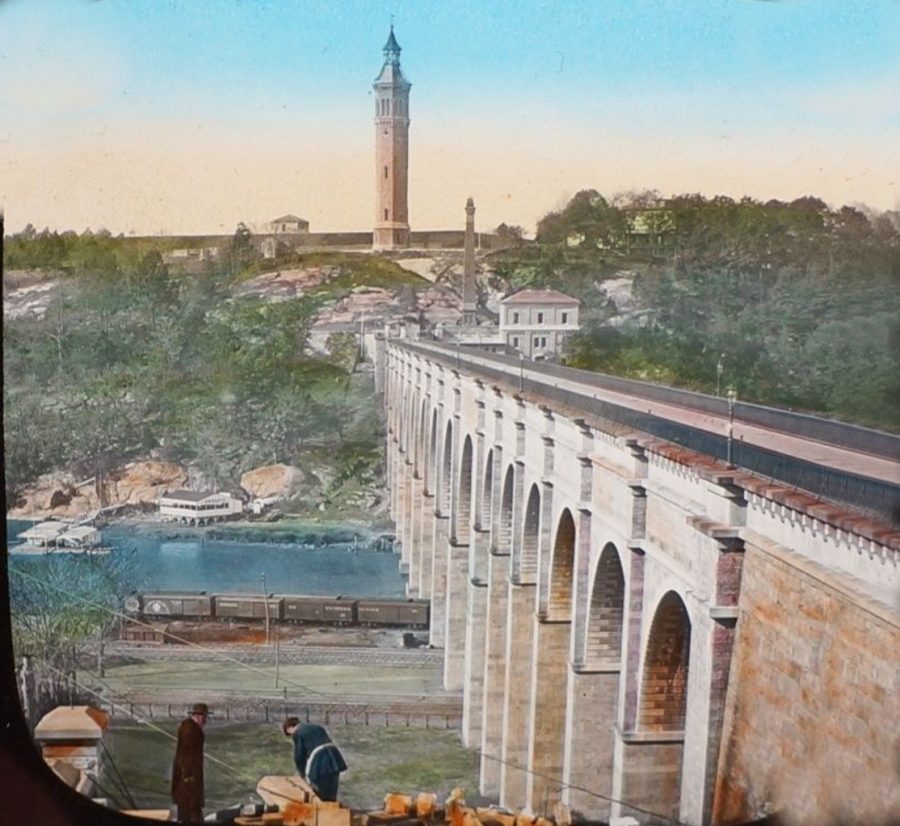High Bridge circa 1890s
 This magic lantern slide offers a clear view of the oldest existing bridge in New York City, High Bridge which opened in 1848.
This magic lantern slide offers a clear view of the oldest existing bridge in New York City, High Bridge which opened in 1848.
High Bridge spans the Harlem River from the Bronx to Manhattan. It was constructed to connect the city with water from the Croton Aqueduct. A pedestrian path was built and became a popular spot for New Yorkers to visit and take in the rural landscape.
Below is the 19th century hand-colored version of the same view but with a lower resolution than our other slide.
In the foreground a stonemason and supervisor are working to build a stairway. Behind them, are the tracks of the New York Central Railroad and several boxcars.
The white pavilion with dark roof along the river is Riley’s which was likely a bar or restaurant. The tall structure is the High Bridge Water Tower Pumping Station built in 1872. The other structures visible are the walls of the reservoir, two gate-houses, an engine-house and boiler-house.
Not visible is a dock and store-shed at the water edge, and an incline plane for raising coal and supplies to the boiler-house from the dock.
 The reservoir beyond the tower was located between 172nd and 174th Streets. This reservoir was 324 square feet and when full could hold sixteen feet of water.
The reservoir beyond the tower was located between 172nd and 174th Streets. This reservoir was 324 square feet and when full could hold sixteen feet of water.
The New Croton Aqueduct built in 1890 would eventually make the High Bridge obsolete for supplying water. The reservoir was removed and replaced by a park and swimming pool in 1936. The Tower Pumping Station ceased use in 1949. Finally in 1958 High Bridge stopped supplying any water to the city. Crime, vandalism and violence led to the “official” closing of High Bridge in 1960.
After being closed for over 50 years High Bridge was repaired and re-opened for pedestrians and cyclists in 2015.





While it’s great that the bridge still exists at all, it is essentially desecrated.
The War Department wanted to tear down the High Bridge as an obstruction to navigation. A compromise was made and in 1928 the city’s Department of Plants and Structures removed five of the arches over the river, replacing them with a single steel arch to facilitate river commerce.